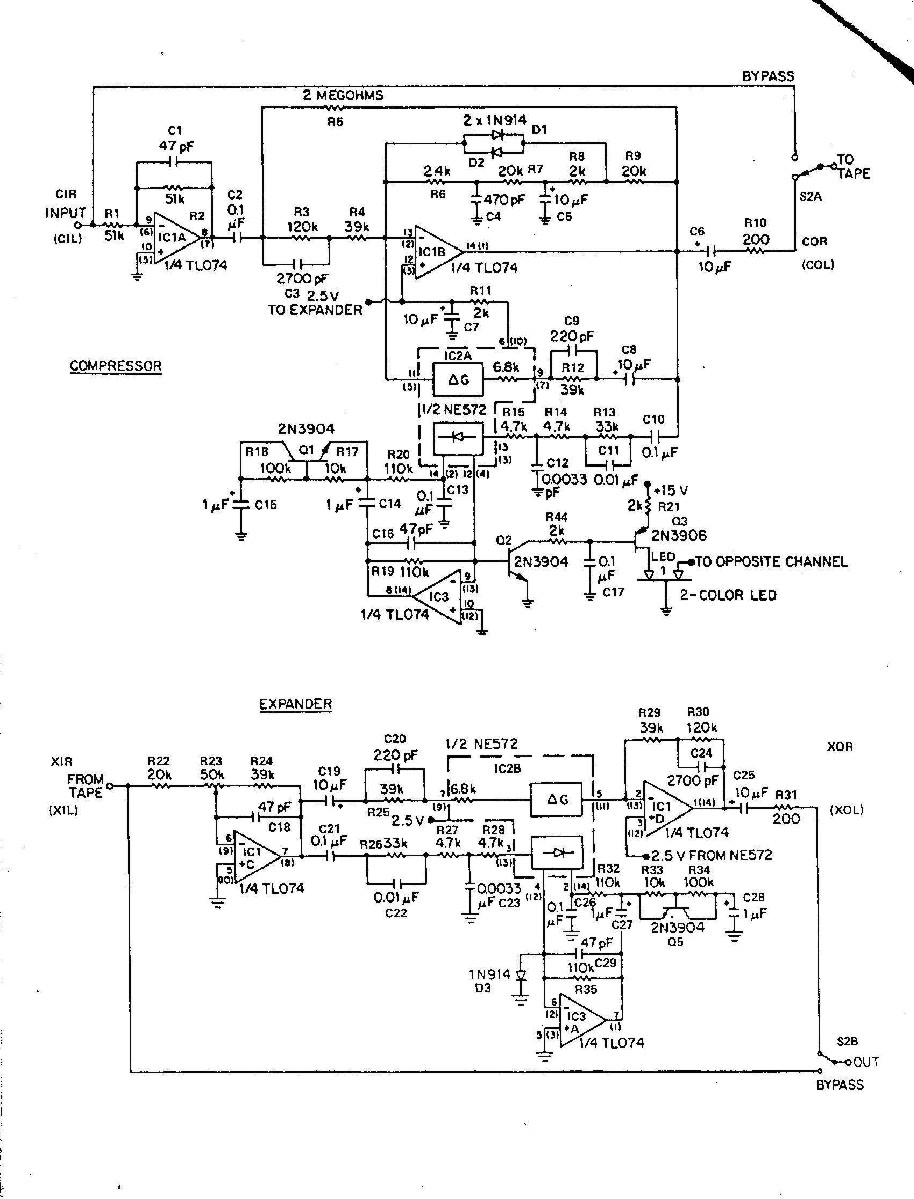bluebird said:
I've been playing with the leach circuit for a bit and I like what it does but am not 100% satisfied with it. Whats neat about it, is how you can completely turn off the fet and distortion becomes a non issue when its not compressing.
Yes a useful characteristic... Many limiters that are only operating when signals are too loud already can get away with less than pristine distortion.
Back in the '80s I designed a quad limiter/noise gate Using OTAs in parallel with unity gain inverting op amp feedback resistors... When the path wasn't limiting or noise gating, my distortion and noise was below residual on a soundtech (bench distortion analyzer from back then). The path performance was arguably better than a VCA, especially how VCAs were 30+ years ago.
The very widely used Peavey DDT clip-limiting is based on a OTA and there are probably millions of them out in the world on peavey power amps. Out of the circuit below clipping, so clean and thrifty.
But yes, when even limiting a couple db's, distortion at 100hz and 10K can rise way into the whole numbers.
The distortion cancelling trick can help, but using JFETs for limiting at high signal levels means you are hitting them with decent voltage swing that they don't like. You can scale down the signal to reduce distortion but that will impact S/N. Modern low noise op amps might help, but I am not a fan of JFETs for limiters. (I have used them in (cheap) noise gates but then they are working on low level signals.
The leach circuit is also nice because the fet is working on a unity gain inverting amp. I was able to get 23db through that amp stage with the fet hanging off it (turned off) and .00XX% distortion. (+/-20v rails). That was usueful to me just because it gave the option of a decent high output signal path when not limiting.
I just ordered a couple of THAT analog engine chips to play around with. John I'm heeding your suggestion of a VCA being the better route for a limiter.
To be clear VCAa are better for compression or whenever the primary audio path is through the gain element. The modern VCA is really quite good. A shame actually that they finally get them this good when analog audio is in decline. ???
OK for a best of the best path performance limiter, I will share something I came up with only a few years ago... The engineer I gave this too is now melting solder up in the sky (RIP) so he won't mind.
Imagine using the THAT vca as subtractive in the feedback path of a unity gain inverting op amp. Now when not limiting we again have the performance of a single op amp. But for limiting we crank in more negative feedback. At -6dB cut we have the performance of a VCA running at -6dB. For -20db of cut the VCA is running at =.9x . I never used this but my friend ran it up on the bench and talked about putting it into one of his products. Their customers would never notice the limiter was that good, because everything they did was that good. 8)
John what do you think of the THAT design notes for limiters?
The THAT website design notes are worthwhile reading (all of them).
http://www.thatcorp.com/datashts/dn00A.pdf
You don't think the Lin/Log thing matters in the side chain?
When using VCAs that respond to log gain control, it is very useful to operate in log domain. My one patent for a VCA (and not a very good VCA at that) operated from linear current controls. This was before DBX/THAT corp were happy selling VCAs to competitors.
Why would THAT go through so much trouble to put the RMS detector in the analog engine chips? They seem to think its pretty important for VCA cv. They also seem to favor feed forward in most of they're design notes, which makes me uneasy...
If you inspect their circuitry RMS was not much trouble at all... (one diode junction). The RMS legend is a carry over from back when DBX was big in tape noise reduction. Their claim back then was that RMS was less affected by tape media phase shift (cough). Never let a good marketing legend go to waste. :

Feed forward, feedback whatever floats your boat... maybe do both.
JR
PS: Just to continue being contrary... If I was going to make an ultimate dynamics dojiggy I'd consider doing it in the digital domain... maybe even with some look ahead delay. I guess it's a good thing I don't design audio products anymore. 8)



